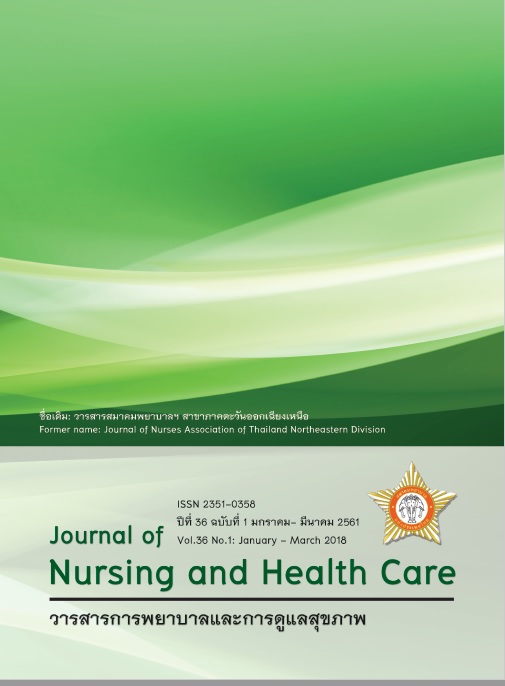การพัฒนารูปแบบการนิเทศทางคลินิกการพยาบาลในการบริหาร ยาความเสี่ยงสูง โดยการมีส่วนร่วมของพยาบาลผู้นิเทศทุกระดับ โรงพยาบาลนครปฐม Development of a Nursing Clinical Supervision Model for High Alert Drugs (HADs) Administration with Nurse Supervisors’ Participat
คำสำคัญ:
การดูแลด้านจิตใจ, ผู้ดูแล, บทบาทของพยาบาล, ผู้ป่วยระยะท้าย, Psychological care, Caregiver, Nurses role, End of life patientบทคัดย่อ
This action research aimed to study the situation and develop a nursing clinical supervision model for high
alert drugs (HADs) administration with nurse supervisors’ participation in Nakhon Pathom Hospital. Seventy
participants were selected by purposive sampling to include the hospital’s nursing director, nursing division
directors, head nurses, nurse supervisors and medication nurse coordinators. Research process focused on
exchanging HADs administration best-practice experience with successful partners and critiquing to arrive at the
new HADs administration supervision model. This study was carried out in 2 cycles with 4 steps for each cycle
including a situational analysis, planning, implementation and evaluation. Quantitative data were collected by
using registered nurse’s perception survey on factors impacting clinical supervision system and analyzed with
descriptive statistics. Qualitative data were collected by focus group discussions, in-depth interviews, brainstorming
and participatory observations and analyzed by content analysis.
A situational analysis revealed that supervisors were assigned roles and responsibilities without clearly defined
relevant competencies for each role. Subsequently, they tended to rely on their experience rather than adhering
to the nursing practice guideline. In addition, the supervision model adopted was not comprehensive and
incompatible with the needs of those being supervised. The existing supervision model focused primarily on
solving problems after medication errors occurred which was different for each ward according to the ward’s
context and workload. Further, medication errors were recorded without proper category coding and led to nurses’
lack of adherence to the 7Rs framework which in turn resulted in HADs errors at a critical level. As a result, the
nursing division 1) established the competency-based clinical supervision policy with medication administration
guideline, 2) enhanced medication supervision competencies for supervisors at all levels and expended the
medication supervision role to medication nurse coordinators and evaluated the outcome using competency
evaluator, and 3) developed the medication errors surveillance system with nurses’ participation in strictly
collecting and reporting data required by the practice guideline.
Results of the nursing system implementation showed that nurse supervisors reported a high level of
satisfaction with the new supervision model at 90.5%, a moderate satisfaction with the supervision manual at
78.2% and nurses’ adherence to the practice guideline rose to 94%. Further, two innovations were developed
including the supervision manual and the supervision role models. Monthly average of HADs errors dropped from
21 incidences in 2017 to 2 incidences in 2018. It is recommended that the hospital and nursing division should
focus their attention on developing registered nurses’ competency in HADs administration through raising
awareness and designating medication error supervision as an action plan policy with continuing quality
improvement. In addition, an error alert system should be set up to provide prompt response and registered
nurses should record both the type and quantity of HADs errors in the computer network.



